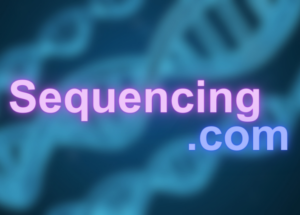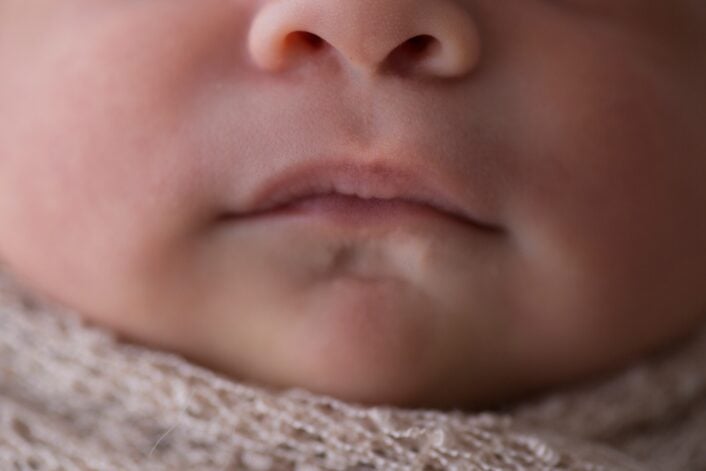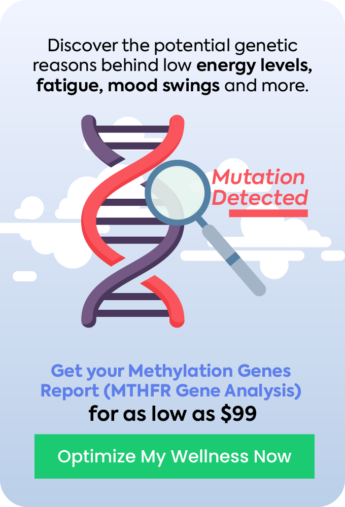
Table of Contents
Are Cleft Chins Inherited? How Genes Affect Chin Shape and Wellness
Written by: Catherine Alcalde
Reviewed by: Maarit Tiirikainen, PhD

Disclaimer: This article is for informational purposes only and is not intended to diagnose any conditions. LifeDNA does not provide diagnostic services for any conditions mentioned in this or any other article.
Overview
Have you ever wondered why some people have that distinctive Y-shaped dimple in the middle of their chin called a cleft chin and others don’t? The answer comes down to genetics.
About a month into a baby’s growth in the womb, the chin starts forming. Usually, the two sides come together smoothly, but sometimes they don’t, leaving a gap or “cleft.” This distinctive trait happens before birth when the jaw’s sides don’t fully join. Despite its look, a cleft chin typically doesn’t cause serious health issues.
However, it raises questions about how they’re formed and how they might indicate underlying genetic patterns relevant to other health conditions. Understanding the inheritance of cleft chins is important for those seeking insights into one’s genetic makeup and potentially also their well-being
What is A Cleft Chin?
A cleft chin, also known as a dimpled chin, is a distinctive facial feature characterized by a small indentation or crease in the center of the chin. This characteristic trait develops during fetal growth, as the lower jawbones form and come together in the middle of the chin. However, in some cases, variations in the fusion of these jawbones result in a gap in the formation, hence the cleft chin.
The development and appearance of a cleft chin can vary from person to person. It may be influenced by a combination of genetic and lifestyle factors that can affect the prominence of the dimple. With weight gain, it can often become more noticeable whereas weight loss can reduce its visibility.
Is Cleft Chin Genetic?
Yes, a cleft chin is influenced by genetics, but it’s not as straightforward as once believed. Initially, it was thought that a cleft chin was a dominant trait determined by a single gene. However, we now understand that chin shape is affected by multiple genes, making it impossible to predict accurately using simple Punnett squares.
A Punnett square is a tool chart used to predict the likely distribution of genotypes in the offspring of two parents. When applied to cleft chins, it demonstrated the probability of an offspring inheriting a cleft chin or a smooth chin from their parents.
How Are Cleft Chins Inherited?
Understanding how cleft chins are inherited involves the complexity of genetics as researchers like John H. McDonald of the University of Delaware concluded. We now know that each individual inherits two copies of every gene, one from a mother and one from a father. Variation in genes is presented by different versions known as alleles. In the case of cleft chins, when simplified, there are at least two alleles: one for a cleft chin and one for a smooth chin. The cleft chin allele is dominant, meaning it usually manifests itself even if only one copy is inherited, while the smooth chin allele is recessive and requires two copies to be expressed.
So, if an individual has a cleft chin, they may have inherited two dominant alleles or one dominant and one recessive allele. This genetic combination influences the likelihood of passing the cleft chin trait to their offspring. Family studies have shown that even parents with smooth chins can have children with cleft chins, indicating the complexity of the actual inheritance patterns.
While early genetic theories suggested that a single dominant gene controlled cleft chin inheritance, recent research by Bhanu and Malhotra has revealed a more nuanced picture. Their studies demonstrated significant variation in cleft chin occurrence among different populations and genders, with factors like age also playing a role. Furthermore, John H. McDonald’s research at the University of Delaware debunked the idea of a simple dominant-recessive trait, highlighting the involvement of multiple genes and environmental factors such as aging in shaping the chin.
Instead of a simple dominant model, many genes work together to determine chin shape, resulting in a wide range of chin types. For example, in early studies, Guenther (1939) found 9 cases in 5 generations, and von Meirowsky (1924) reported 25 cases in 4 generations. Gorlin (1982) noted it in 4 generations, and McKusick (1988) found it in 3 generations. McKusick (1992) stated that a publishing colleague of his, who had this trait, was in the third generation of affected males in his family. In general, females appear to be less conspicuously affected than males. Family studies have shown that having a cleft chin is not just about having strong “cleft” alleles—sometimes even parents with smooth chins have kids with cleft chins.
Research by Bhanu and Malhotra (1972), shows that there’s significant variation in the occurrence of cleft chins among different groups and genders. For example, the data showed that 4% to 71% of Indian populations had cleft chins and that German males possessed them with greater frequency than their female counterparts. Moreover, they discovered that as age progresses, so does the likelihood of a cleft chin becoming more prominent. This, therefore shows the intricate nature of cleft chin inheritance, its appearance, and the need for a comprehensive understanding of genetic and environmental influences on facial traits.
Is a Cleft Chin Permanent?
A cleft chin is permanent, as it is a physical characteristic determined by genetics and the structure of the jawbone. While there are some nonsurgical and surgical procedures that can alter the appearance of a cleft chin, these are not always permanent solutions and may carry risks or complications. It is advisable to consult a professional for personalized advice.
Impact of Cleft Chins on Health
Age-related eyelid sagging is generally a permanent condition due to the natural aging process. While the condition itself is permanent, there are effective treatments available to address and manage eyelid sagging.
Non-surgical options include the use of skin-firming creams and treatments that can temporarily tighten the skin around the eyes. For a more long-lasting solution, surgical procedures like blepharoplasty can remove excess skin and tighten the muscles, significantly improving the appearance of sagging eyelids.
Impact of Cleft Chins on Health
While cleft chins are generally considered a harmless genetic trait, their presence can sometimes indicate underlying genetic patterns that might be relevant for other wellness conditions. Here are a few considerations:
- Jaw and Bone Structure: Cleft chins can be part of a broader pattern of jaw and bone development. The same genetic factors that contribute to the formation of a cleft chin can also influence the overall shape and alignment of the jaw. This can be important for understanding dental health and the need for orthodontic treatments.
- Associated Other Genetic Conditions: In rare cases, a cleft chin might be associated with certain genetic syndromes or conditions. However, these instances are uncommon, and a cleft chin is typically an isolated trait without significant wellness conditions.
Can You Prevent Cleft Chin?
For individuals concerned about the appearance of their cleft chin, there are both non-surgical and surgical procedures available to address this trait. Non-surgical procedures offer temporary solutions by reducing the visibility of a cleft chin and requiring regular maintenance to sustain the desired outcome.
On the other hand, surgical options provide more permanent alterations to the chin’s appearance. While these surgical procedures offer long-lasting results, they also come with potential risks and complications, such as infection, bleeding, or dissatisfaction with the aesthetic outcome. Therefore, individuals considering surgical options should consult with a qualified healthcare provider to thoroughly understand the associated risks and benefits before proceeding with this type of treatment.
Nonsurgical Procedures
For individuals seeking non-surgical procedures, these options focus on enhancing chin contours and reducing the appearance of the cleft through minimally invasive techniques.
- Dermal Filler Injections: This procedure involves injecting substances like hyaluronic acid or collagen-based fillers into the chin area. The goal is to increase volume and reduce the appearance of the cleft. It’s a fast and straightforward procedure, offering results that can last anywhere from several months to a year. However, there may be some consequences to watch out for, like redness, swelling, or bruising at the injection site.
- Fat Grafting: This is a procedure where fat is taken from one part of the body and injected into the chin. This allows the fat cells to blend naturally with the surrounding tissue, resulting in a long-lasting effect. However, achieving the desired look may require multiple sessions.
- Botox Injections: Botox injections target the muscles around the chin to reduce the visibility of the cleft. It’s a fast procedure and the effects usually last for three to six months. Although generally safe, there might be temporary side effects like bruising, swelling, or muscle drooping.
Surgical Options
These procedures involve more permanent solutions for reshaping the chin structure to remove the cleft and achieve the desired outcomes.
- Radiofrequency Microneedling: This surgical procedure is great for those with slight to moderate chin creases. It uses microneedles and radiofrequency energy to boost collagen and smoothen chin skin. This process tightens skin and reduces cleft appearance permanently. Some might have temporary redness, swelling, or mild discomfort.
- Genioplasty (Chin Surgery): This surgery reshapes the chin bone to fix a cleft and improve facial harmony. Usually done under general anesthesia, it might involve cutting and repositioning the chin bone. Genioplasty provides permanent fixes for both aesthetic and functional chin issues. However, it’s more invasive than non-surgical choices and could mean a longer recovery period. Risks include infection, inflammation, bleeding, nerve issues, and dissatisfaction with the appearance.
- Chin Implant Surgery (Mentoplasty): This procedure involves implanting silicone or synthetic material onto the chin bone to increase its size and projection. Tailored to match the patient’s anatomy and preferences, these implants provide enduring outcomes. However, there’s a possibility of issues like implant displacement, infection, or unevenness, which might require further procedures. Patients should note the potential visibility or palpability of the implant, particularly in thinner or aging skin.
- Liposuction: Liposuction removes excess fat from the chin area to refine contours and reduce the prominence of a cleft. Using a cannula inserted through small incisions, fat is suctioned out during the procedure. While providing immediate results, liposuction may not address underlying structural issues. Risks include bruising, swelling, or irregularities in the chin’s appearance.
- Soft Tissue Augmentation: This involves injecting synthetic or biological materials into the chin area to enhance volume and conceal the cleft’s appearance. Common fillers include hyaluronic acid, collagen, or calcium hydroxylapatite, offering temporary enhancement. Results may last several months to a year, with potential risks including allergic reactions or infection.
Summary
- A cleft chin, or dimpled chin, is a distinctive facial feature resulting from variations in the fusion of lower jawbones during fetal growth.
- Cleft chin is now known to be influenced by numerous factors such as genetics, lifestyle, and environment.
- Understanding how genetics works helps in predicting the likelihood of having a cleft chin and in appreciating the diversity of chin shapes.
- Notable research by Bhanu and Malhotra highlights significant variation in cleft chin prevalence across populations and ages.
- John H. McDonald’s work emphasizes the involvement of multiple genes and non-genetic factors in cleft chin development.
- Understanding cleft chin genetics helps us learn more about jaw and bone development.
- Sometimes, cleft chins might signal other health conditions, so genetic analysis is essential.
- Environmental factors like aging may also affect the visibility of a cleft chin.
- Individuals considering surgical options should thoroughly understand the associated risks and benefits.
- Surgical and non-surgical interventions offer options for modifying cleft chin appearance, with varying permanence and risks.
References
- https://www.plasticsurgery.org/news/blog/how-to-get-rid-of-a-cleft-chin
- https://omim.org/entry/119000
- https://udel.edu/~mcdonald/mythcleftchin
- https://www.thetech.org/ask-a-geneticist/ask47
- https://www.ancestry.com/c/traits-learning-hub/cleft-chin
- https://www.plasticsurgery.org/news/blog/how-to-get-rid-of-a-cleft-chin
- https://washingtonindependent.org/cleft-chin/
- https://www.thetech.org/ask-a-geneticist/articles/2023/what-causes-cleft-chin/
*Understanding your genetics can offer valuable insights into your well-being, but it is not deterministic. Your traits can be influenced by the complex interplay involving nature, lifestyle, family history, and others.
Our reports and suggestions do not diagnose or treat any health conditions or provide any medical advice. Consult with a healthcare professional before making any major lifestyle changes or if you have any other concerns about your results.
Latest Posts
Customer Reviews









